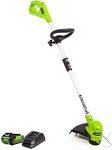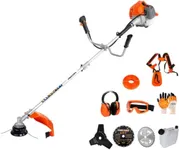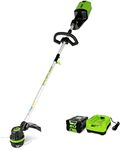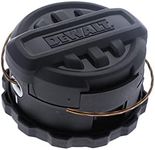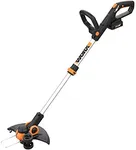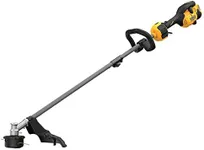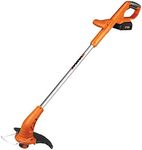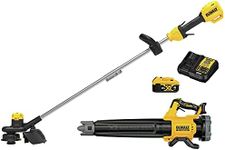Buying Guide for the Best Weed Trimmers
Choosing the right weed trimmer can make yard work much easier and more efficient. The best trimmer for you depends on the size of your yard, the type of vegetation you need to cut, and your comfort with handling different tools. Understanding the main features and specifications will help you select a trimmer that matches your needs and makes the job less tiring and more effective.Power SourceThe power source refers to how the trimmer is powered—either by gas, electricity (corded), or battery (cordless). Gas trimmers are usually the most powerful and are good for large areas or tough weeds, but they are heavier and require more maintenance. Corded electric trimmers are lighter and quieter, but you need to be near an outlet and manage the cord. Battery-powered trimmers offer more mobility and are quieter, but their run time is limited by battery life. Think about the size of your yard and how much freedom of movement you need to decide which power source fits you best.
Cutting WidthCutting width is the diameter of the area the trimmer can cut in one pass, usually measured in inches. A wider cutting width means you can trim more grass or weeds at once, which is helpful for larger areas. Smaller cutting widths are easier to control and better for precision work in tight spaces. If you have a big, open yard, a larger cutting width can save you time. For smaller yards or lots of obstacles, a narrower width may be easier to handle.
WeightWeight is how heavy the trimmer is, and it affects how long you can comfortably use it. Heavier trimmers can be tiring to use, especially for long periods or if you need to lift and maneuver them a lot. Lighter trimmers are easier to handle and better for people who may not have a lot of upper body strength. Consider how long you usually spend trimming and how comfortable you are with carrying weight when choosing.
Line Feed SystemThe line feed system is how the trimmer releases more cutting line as it wears down. There are manual, bump, and automatic feed systems. Manual systems require you to stop and pull out more line by hand. Bump feed systems let you tap the trimmer head on the ground to release more line, while automatic systems feed line out as needed. If you want less interruption and easier use, automatic or bump feed systems are more convenient, especially for longer jobs.
Shaft TypeShaft type refers to the shape of the trimmer’s handle—either straight or curved. Straight shafts are usually longer and better for reaching under bushes or into tight spots, and they tend to be more durable for heavy-duty work. Curved shafts are shorter and lighter, making them easier to control and more comfortable for shorter users or lighter tasks. Think about your height, the type of areas you need to trim, and how much control you want when choosing a shaft type.
Noise LevelNoise level is how loud the trimmer is when in use. Gas trimmers are usually the loudest, while electric and battery-powered models are quieter. If you live in a neighborhood with noise restrictions or want to avoid disturbing others, a quieter trimmer may be important. Consider your environment and personal preference for noise when making your choice.
